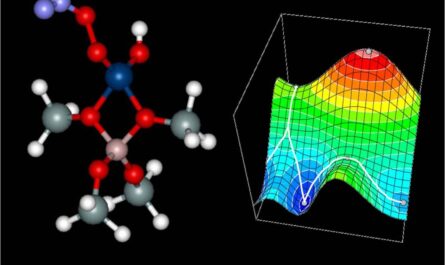A breakthrough in medical technology has lowered the barrier to treating brain diseases using focused ultrasound. Focused ultrasound technology is a non-invasive method that delivers precise ultrasound energy to specific areas of the brain, including deep regions, to treat neurological disorders without the need for invasive surgery. This technology has shown promise in treating conditions such as depression and Alzheimer’s disease, as it minimizes damage to healthy tissue and reduces side effects. However, its practical application has been hindered by the difficulty of accounting for the distortion of ultrasound waves caused by variations in skull shape among patients.
In a recent study published in the journal NeuroImage, a research team led by Dr. Kim Hyungmin from the Bionics Research Center at the Korea Institute of Science and Technology (KIST) has developed a real-time acoustic simulation technology using artificial intelligence (AI) to predict and correct the distortion of ultrasound waves caused by the skull during focused ultrasound therapy. This advancement validates the clinical applicability of AI simulation models in non-invasive focused ultrasound treatment.
Currently, medical imaging-based navigation systems are used to predict the location of the acoustic focus. These systems provide information about the relative position of the patient and the ultrasound transducer, but they do not account for the distortion caused by the skull. Various simulation techniques have been attempted to compensate for this distortion, but they require significant computational time, making them impractical for real-time clinical use.
The research team at KIST developed a real-time focused ultrasound simulation technology using a generative adversarial neural network (GAN), a deep learning model commonly used in medical image generation. This technology significantly reduces the update time of three-dimensional simulation information from 14 seconds to just 0.1 seconds. Furthermore, it maintains a low maximum acoustic pressure error of less than 7% and a focal position error of less than 6mm, both within the range of existing simulation technologies. These improvements increase the possibility of clinical application.
To validate the performance of the developed technology and facilitate its rapid integration into clinical practice, the research team also created a medical image-based navigation system. This system provides real-time acoustic simulations at a rate of 5 Hz, enabling the prediction of ultrasound energy and focus positions within the skull during treatment.
Previously, the long computation time required that the ultrasound transducer be precisely positioned based on pre-planned locations to utilize the simulation results. However, with the new simulation-guided navigation system, ultrasound focus can now be adjusted in real time based on the acoustic simulation results. This innovation is expected to improve the accuracy and safety of focused ultrasound treatment, as it allows for quick responses to unexpected situations that may arise during the treatment process.
Dr. Kim Hyungmin from KIST believes that this research will lead to more clinical applications of focused ultrasound treatment for brain diseases as its accuracy and safety have been significantly improved. The research team plans to further validate the system by testing it in diverse ultrasound sonication environments, such as multi-array ultrasound transducers. This advancement brings new hope for patients suffering from brain diseases, offering a more effective and safer treatment option.
*Note:
1. Source: Coherent Market Insights, Public sources, Desk research
2. We have leveraged AI tools to mine information and compile it



